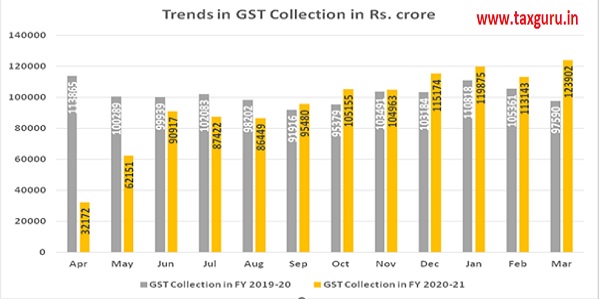Economists now expect that economy may grow @ 27%, 10%, 59% and 6% in four quarters of 2021-22. Though pandemic may worsen before getting better, strict lock- downs are unlikely. SBI has also endorsed that Indian economy is now on the path of high growth.
Now UN economic and social commission for Asia & Pacific has stated in a report that Indian economy may grow @7% in FY 2022 against a contraction of 7.7% in last year, despite the Covid vaccine roll out. It says, despite a robust reduction in new Covid cases and start of vaccination, India’s economic output is expected to remain below 2019 bench mark. On Asia Pacific region as a whole, developing economies are expected to grow @5.9% in 2021 and 5% in 2022.
Accordingly to World Bank (WB), backed by private consumption and public investment, Indian economy is now expected to grow by 10.01% in 2021-22. It may be in the broad range of 7.5% to 12.5%. This is higher by 4.7% of WB’s earlier prediction.
RBI’s stance continues to keep inflation target unchanged @4% for next five years, i.e., from 2021 to 2026. However, output of eight infrastructure sectors has contracted by 4.6% in February, 2021 with all the core segments including coal, crude, oil, natural gas / refinery products and fertilizers seeing a decline.
CAG has recently commented that GST system is prone to input tax credit frauds due to complexities in the compliance system and inbuilt glitches in GSTN. CAG has suggested to fix a definite time frame for rolling out of simplified GST returns forms. It states that GST return system is still a work in progress despite more than three years of its roll out. It has called for on ‘over haul’ of indirect taxation.
Infact further simplification of GST system is needed to boost collections. The states are also expected to step up their efforts to improve GST compliance to make GST functioning effective as well as efficient.
As we start a new financial year w.e.f. 1st April, 2021 (FY 2021-22), many new changes are going to take place in GST – mandatory e-invoicing by registered persons with aggregate turnover of over Rs. 50 crore, mandatory QR code on B2C invoices, mandatory HSN Code on tax invoices of 4/6 digits etc. CBIC has issued a notification notifying waiver of penalty till 30th June, 2021 for QR Code on B2C invoices.
The figures of GST collection for March, 2021 are out which are at the record highest so far since inception of GST in India on July, 2017. The gross GST revenue collected in the month of March 2021 is at Rs. 1,23,902 crore of which CGST is Rs. 22,973 crore, SGST is Rs. 29,329 crore, IGST is Rs. 62,842 crore (including Rs. 31,097 crore collected on import of goods) and Cess is Rs. 8,757 crore (including Rs. 935 crore collected on import of goods).
GST Collections during FY 2020-21 at a Glance

(Source: CBIC PIB Release ID: 1708930 dated 01.04.2021)
In line with the trend of recovery in the GST revenues over past five months, the revenues for the month of March, 2021 are 27% higher than the GST revenues in the same month last year. During the month, revenues from import of goods was 70% higher and the revenues from domestic transaction (including import of services) are 17% higher than the revenues from these sources during the same month last year.
All states and UT’s in India except Daman & Diu and Andaman & Nicobar have shown positive growth. The revenue has grown highest in Ladakh followed by J & K, Arunachal Pradesh, Manipur, West Bengal, Kerala, Tamil Nadu etc.
With March, 2021 GST collection, the net collection has surpassed revised estimates for FY 202021. A sleep hike in GST collection is an indicator of fast economic recovery. GST showed growth of -41%, -8%, 8% and 14% in four quarters of 2020-21 on YoY basis. There is also an additional devolution of Rs. 45000 crores for FY 2020-21 to states which is a positive indicator.
On the other hand, refunds have been to the tune of Rs. 2.5 lakh crore as against Rs. 1.86 lakh crore in 2019-20. This is likely to act as a stimulus. Government claims that system has facilitated honest assessees to pay taxes without any problem and rising GST collection for six months straight can not be termed as a mere coincidence. Now, the number of complaints has reduced significantly. In total, on the one hand, there is greater compliance and, on the other, the economy is picking up, contributing to higher collection.
It is felt that and also claimed by Government that GST revenues crossed above Rs. 1 lakh crore mark at a stretch for the last six months and a steep increasing trend over this period are clear indicators of rapid economic recovery post pandemic. Closer monitoring against fake-billing, deep data analytics using data from multiple sources including GST, Income-tax and Customs IT systems and effective tax administration have also contributed to the steady increase in tax revenue over last few months.





